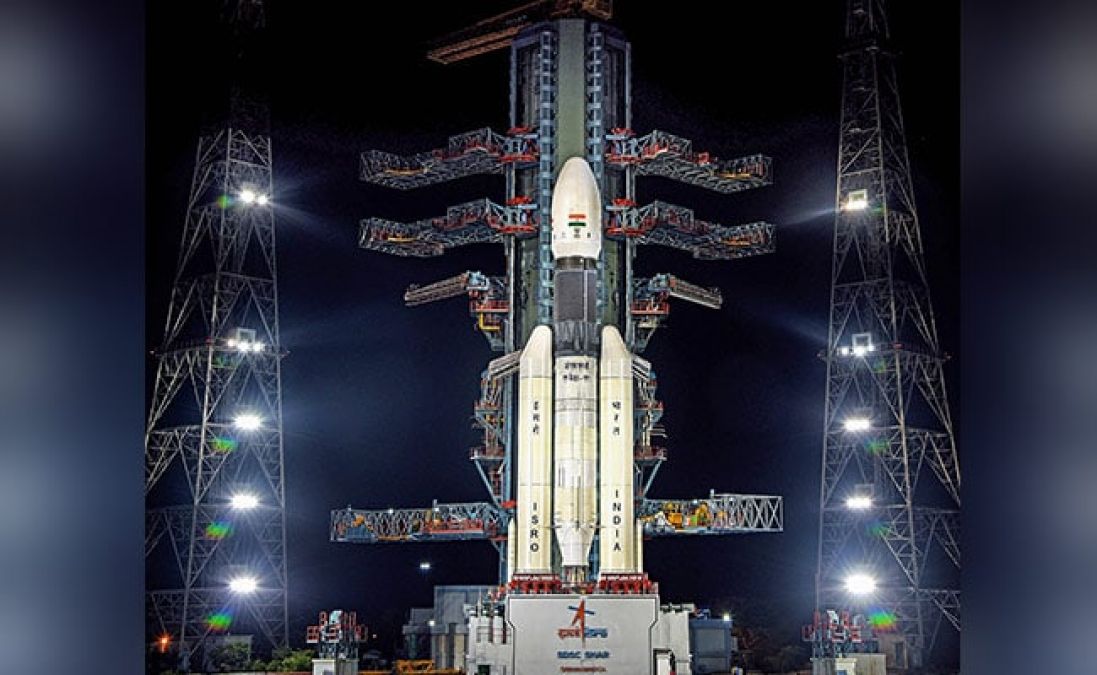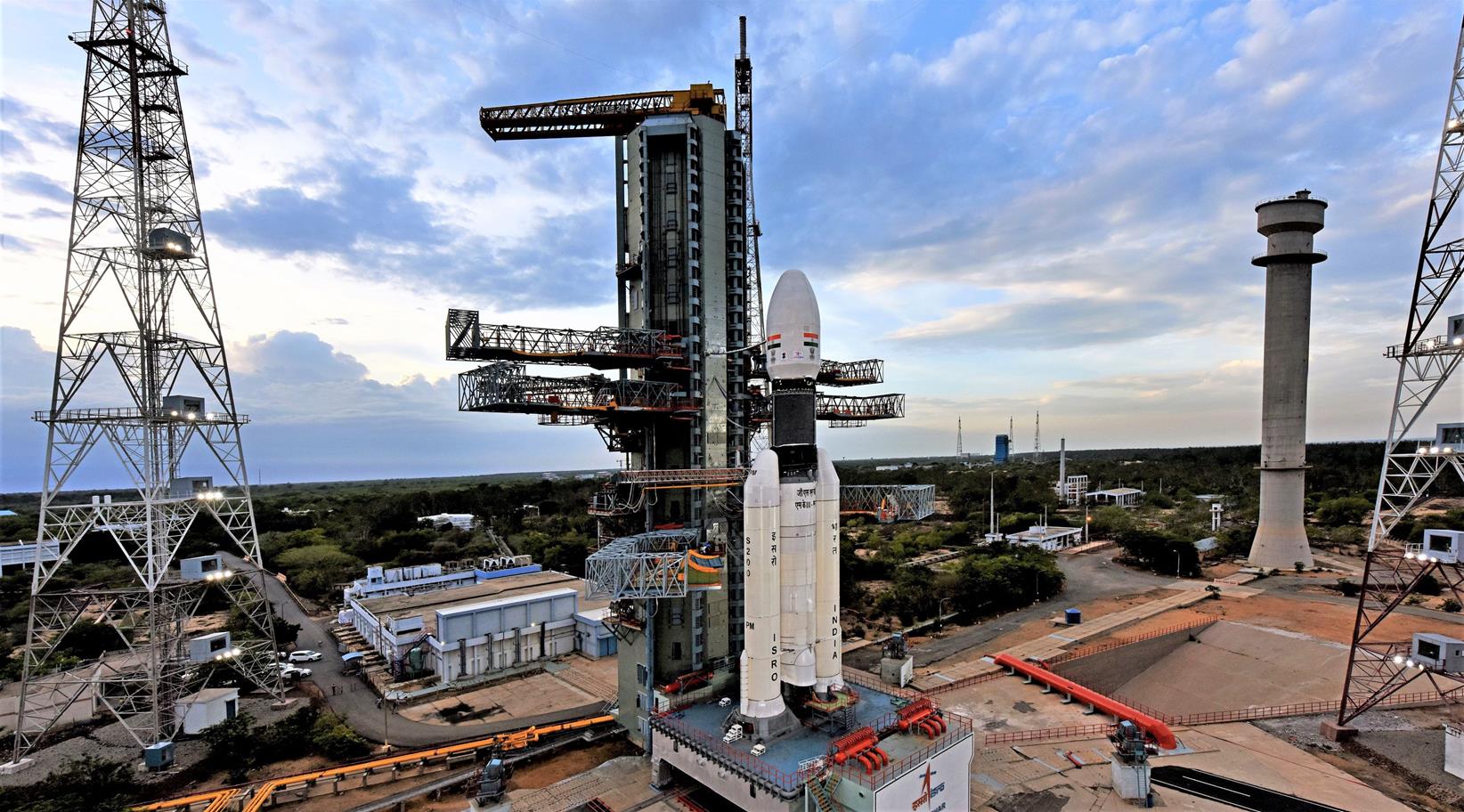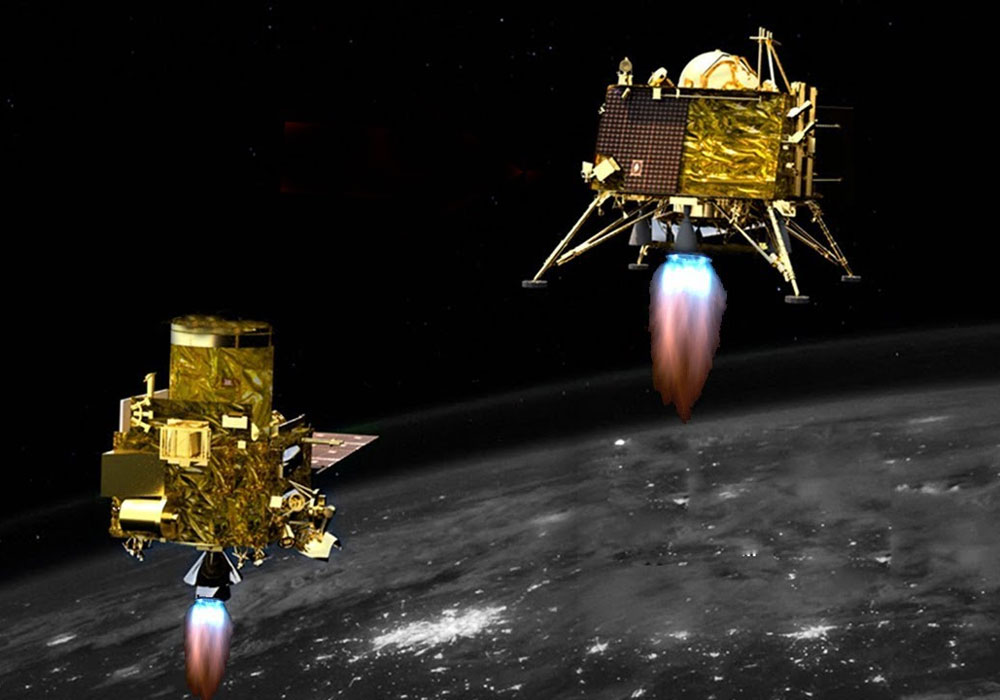ISRO Chief Somnath Asserts Chandrayaan-3’s Moon Landing Amidst Adversity and Challenges

ISRO Chief Somnath Asserts Chandrayaan-3’s Moon Landing Amidst Adversity and Challenges
The statement from ISRO Chairman S Somnath reflects the confidence and optimism of the organization in the successful execution of the Chandrayaan-3 mission. Despite the challenges and uncertainties that space missions often entail, the chairman’s assurance that the lander will make a soft landing on the lunar surface as per schedule underscores the dedication, expertise, and meticulous planning that go into such endeavours.
Chandrayaan-3, as the follow-up mission to Chandrayaan-2, aims to build upon the knowledge gained from previous missions and further India’s exploration of the moon. Soft landing on the lunar surface is a significant achievement in space exploration, and the successful completion of the mission will not only contribute to scientific research and demonstrate India’s capabilities in space technology and exploration.
It’s important to note that space missions are complex and involve various factors and variables that can impact their outcomes. ISRO’s commitment to overcoming challenges and positive outlook reflects the spirit of exploration and innovation that drives space agencies worldwide. As with any space mission, there is an inherent level of risk, but ISRO’s track record and determination suggest a strong likelihood of success for the Chandrayaan-3 mission.

The statement made by ISRO Chairman S Somnath further emphasizes the meticulous engineering and design that has gone into the Chandrayaan-3 mission, particularly the Vikram lander. His assertion that even in the face of multiple failures, the lander is designed to still make a landing highlights the robustness of the technology and systems developed for the mission.
The ability of the Vikram lander to handle various failure scenarios and still accomplish its primary objective demonstrates ISRO’s commitment to ensuring mission success even in challenging circumstances. Incorporating redundancies and backup systems, along with sophisticated algorithms, underscores the organization’s dedication to mitigating risks and maximizing the chances of mission accomplishment.
Such design considerations are crucial in space exploration, where unpredictable variables and technical complexities exist. They reflect the years of research, testing, and refinement that engineers and scientists undertake to ensure the best possible outcome. Missions like Chandrayaan-3 epitomize the spirit of pushing the boundaries of human knowledge and technology. ISRO’s approach to addressing potential failures illustrates its commitment to overcoming challenges in pursuing scientific advancement.
The successful launch of Chandrayaan-3 aboard an LVM-3 (Geosynchronous Satellite Launch Vehicle Mark III) rocket from the Satish Dhawan Space Centre marked a significant milestone in India’s space exploration endeavours. The launch was on July 14, marking the beginning of the spacecraft’s journey towards the moon.

Following the launch, Chandrayaan-3 executed a series of planned manoeuvres to position itself in a higher Earth orbit. These manoeuvres are crucial for the spacecraft to gradually gain the necessary velocity and altitude to break free from Earth’s gravitational pull and enter a trajectory that will eventually lead it to the moon.
Once the spacecraft achieved the desired Earth orbit, it embarked on a translunar trajectory. This means that Chandrayaan-3’s path was adjusted to intersect with the moon’s orbit, setting the stage for the lunar mission phase. The precise planning and execution of these orbital manoeuvres are critical to ensure that the spacecraft reaches its intended destination, the lunar surface.
The successful navigation through these mission phases showcases the expertise and precision of ISRO’s engineers and scientists. It demonstrates their ability to calculate and execute complex orbital trajectories, allowing Chandrayaan-3 to confidently embark on its lunar journey. The combination of advanced propulsion systems, onboard guidance and control systems, and meticulous planning makes missions like Chandrayaan-3 possible and underscores India’s growing capabilities in space exploration.
On August 5, the Indian Space Research Organisation (ISRO) announced a significant achievement for the Chandrayaan-3 mission – the spacecraft successfully entered the moon’s orbit. This critical milestone marks a key step in the mission’s progression towards its ultimate goal of making a soft landing on the lunar surface.

After entering the moon’s orbit, Chandrayaan-3 will undergo a series of carefully orchestrated manoeuvres to refine its trajectory and prepare for the crucial phase of descent and landing. The deboost process is a crucial part of this preparation. During this phase, the spacecraft’s propulsion system will gradually reduce its velocity and altitude, allowing it to descend slowly and precisely towards the lunar surface.
The culmination of these efforts is scheduled for August 23, when Chandrayaan-3 is anticipated to achieve its most ambitious objective – a soft landing on the moon. A successful soft landing would mean that the spacecraft lands gently on the lunar surface without causing damage to its components, sensors, and scientific instruments. This achievement requires a delicate balance of propulsion control, precise navigation, and real-time adjustments to account for unexpected variables.
ISRO’s relentless efforts, meticulous planning, and advanced technology have led to this stage in the Chandrayaan-3 mission. The journey from Earth to the moon, the intricacies of lunar orbit insertion, and the subsequent controlled descent highlight the complexity of space missions and the expertise required to execute them successfully. If Chandrayaan-3 accomplishes its soft landing as planned, it will be a momentous achievement for India’s space program and contribute to our understanding of the moon’s surface and composition.
Indeed, the Chandrayaan-3 mission holds the potential to make India the fourth nation in history to successfully achieve a soft landing on the moon, joining an elite group of spacefaring countries that have accomplished this remarkable feat.

The United States and the Soviet Union (now Russia) pioneered moon landing achievements. The United States Apollo program famously achieved six successful manned moon landings between 1969 and 1972. The Soviet Union’s Luna program achieved the first successful robotic soft landing with Luna 2 in 1959 and later sent several robotic missions to the moon.
With its Chang’e program, China became the third nation to achieve a successful soft landing on the moon. The Chang’e 3 mission in 2013 marked China’s first successful lunar landing, followed by Chang’e 4 in 2019, which achieved the first soft landing on the moon’s far side.
While other nations like Israel and Japan have attempted lunar landings through privately-led initiatives, these attempts faced challenges and did not result in successful landings.

For India, the Chandrayaan-3 mission represents an important opportunity to demonstrate its capabilities in space exploration and reiterate its commitment to advancing scientific knowledge and technological prowess. The mission’s success would indeed be a significant milestone, not only in terms of space exploration but also in terms of national pride and scientific achievement.




